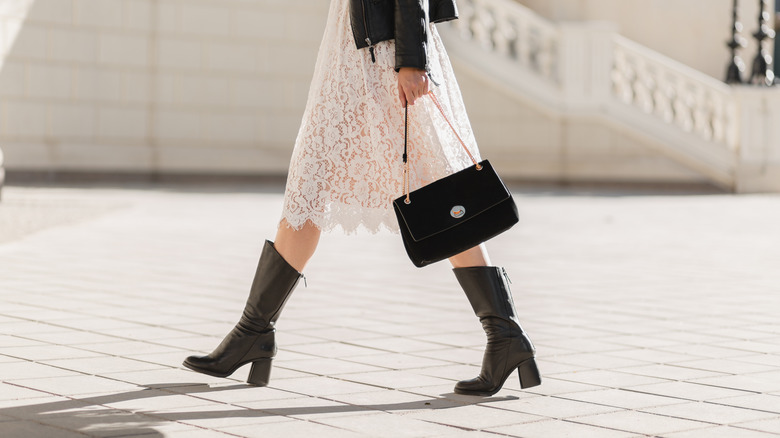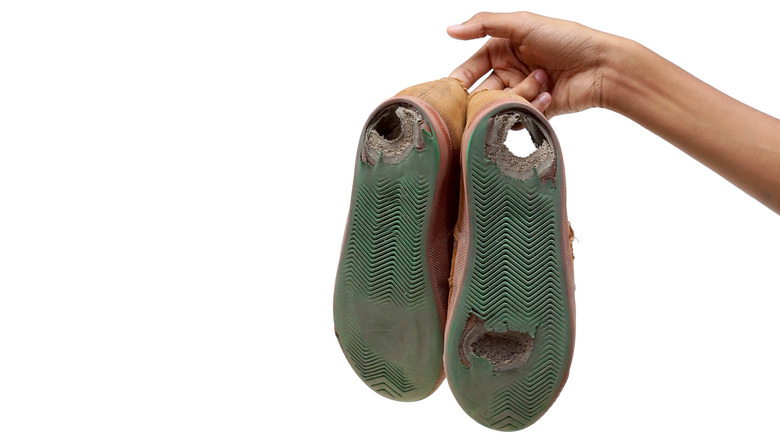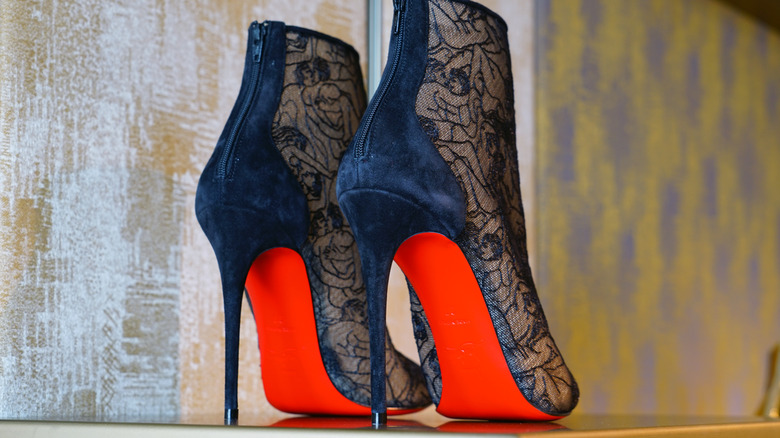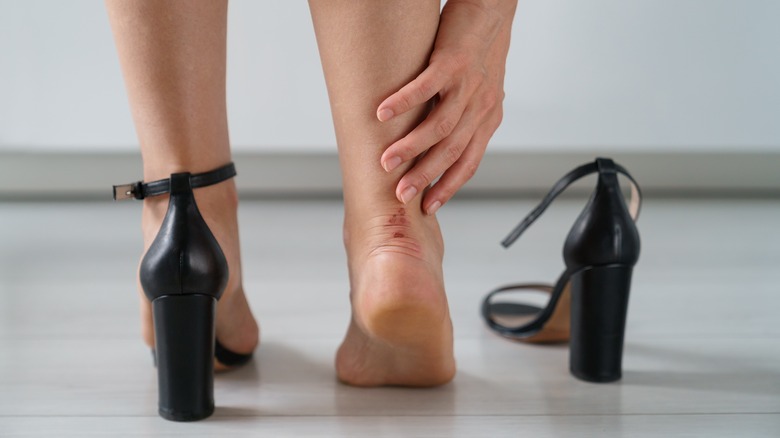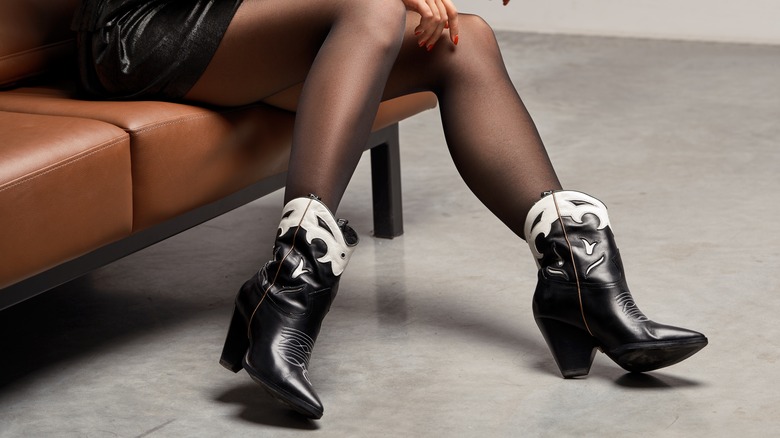What To Look For When Buying A Pair Of Vintage Shoes
Vintage shopping is great for a myriad of reasons — you get access to unique pieces, there's typically high-quality construction, and it's more sustainable than buying new — but a lot of people are still a bit hesitant to change their shopping habits. That tide, however, is shifting. According to Statista, the secondhand apparel market, already valued at $96 billion, is expected to continue growing over the next few years, and as people continue to become more accustomed to buying pre-loved clothing items, shoes will likely follow suit.
Finding vintage shoes that will fit and last with consistent wear, however, can be a bit of a challenge. Older clothing, for the most part, is pretty simple to maintain, and any damage or alterations that need to be made can easily be accomplished with a sewing machine. With shoes, there's a bit more of a learning curve. Keep reading for our top tips on what you should keep an eye out for when buying vintage shoes to guarantee you'll be investing in a pair you'll love for years to come.
Inspect carefully for damage
The first major step in buying a pair of vintage shoes is, of course, checking for damage. This is even more important than it typically is with clothing because shoes are usually more difficult to repair. Unless you have a cobbler on call, worn soles, holes in the material, and scuffs or scratches are something you'll just have to live with after your purchase.
A once-over is great to get a basic idea of the shoes' condition, but it's a good idea to take some time and carefully inspect before you buy. To start, check the sole of the shoe. This is the most essential component, obviously, so if there are any holes or especially worn spots, it's a good idea to pass. Then, take a look inside for peeling inserts or a damaged lining. Sometimes, this can be fixed with a store-bought insert or some patching to reinforce the material, but it's still a good idea to check out. Finally, give the whole shoe a detailed once-over, looking out for unsightly scuffs, cracking or flaking leather, and peeling glue.
Do some research on the brand
Once you've determined that your shoes are in good condition, do a bit of research on the brand. This doesn't have to be anything in-depth, but decoding the label can help you determine if the pair of shoes is fairly priced, what time period they're from, and if they're a quality brand or not. Designer labels like Christian Louboutin, Gucci, and Prada are obviously stellar finds, but something like discontinued UGGs or vintage Tony Lama boots can be worth quite a bit of money, too.
Once you find the brand on the shoe, do a quick online search or look to a vintage label database like Vintage Fashion Guild to properly date them. From there, you can look on a resale site like Ebay, Etsy, or Vestiaire Collective to see how other similar styles from that time period are priced. Who knows — you might end up striking gold with something rare or desirable.
Double check the sizing
If you're already a fan of vintage fashion, you know that older sizing is, to put it simply, incredibly confusing. Luckily, shoes haven't fallen victim to the epidemic of vanity sizing, but there are still a few differences to keep in mind if you're looking at older brands. Mainly, width.
Instead of just running on the typical numerical measurements, many vintage shoes also featured several options for with, notated by letters ranging from AAA to EE (via A Vintage Sole). Because the vast majority of things are mass produced nowadays, most shoes are only available in medium width options, which corresponded to a vintage B for women. As for the numerical system, sizing has remained pretty consistent since the late 1800s, so you can be fairly confident that you'll fit your modern size length-wise. Across the board, the easiest way to judge if something will fit is by trying it on, but if you don't have that option, asking the seller for precise measurements can help you make sure your purchase will be the correct size for you.
Exercise caution with leather pieces
All vintage shoes should be closely checked for damage, but when it comes to leather and suede, it's a good idea to exercise extra caution. If leather shoes aren't stored properly or cared for consistently, especially over the course of decades, they can face some major damage in the form of cracks or peeling. Something that looks good on the shelf could begin to crumble after the first wear if they've just been sitting in the back of a closet or storage unit for years — that's the risk of working with a natural material (via How to Shoe).
Sometimes, these pieces are beyond repair, but if you catch the damage early enough, there are a few things you can do to restore them and keep your shoes in good shape. First, always start off with a leather conditioner to bring some moisture back to the material. This should work on small cracks, but if you're dealing with something bigger, it's a good idea to consult with an expert or pass altogether if you're not ready to shell out some time and money to restore your vintage find.
